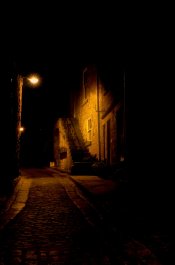Vaughn...that rocks! Thanks a lot. That is what I was after pretty much, when I asked the question here. It certainly helps explain a lot of my mis-understandings!
I do have a question about it. Where it says, for example, meter reading of 20 minutes = 4 hours....I don't get that. If the meter says 20 minutes for a "correct exposure", 4 hours is making it considerably "over exposed". Is that the point, though? Is that how his pictures look the way they do and so bright despite apparant darkness? In other words, a piece of technology might report 20 minutes as a suitable exposure time, but he's taking it to 4 hours? Or have I mis-understood that?
As for the roll of 120 I shot at 10\15 secs in almot utter darkness...by the sounds of it, I think I may as well just throw that out rather than paying to have it dev'd!
I do have a question about it. Where it says, for example, meter reading of 20 minutes = 4 hours....I don't get that. If the meter says 20 minutes for a "correct exposure", 4 hours is making it considerably "over exposed". Is that the point, though? Is that how his pictures look the way they do and so bright despite apparant darkness? In other words, a piece of technology might report 20 minutes as a suitable exposure time, but he's taking it to 4 hours? Or have I mis-understood that?
As for the roll of 120 I shot at 10\15 secs in almot utter darkness...by the sounds of it, I think I may as well just throw that out rather than paying to have it dev'd!







